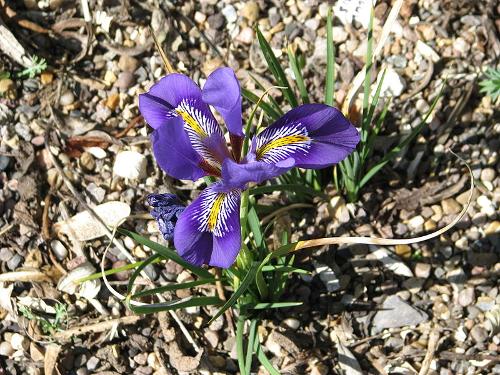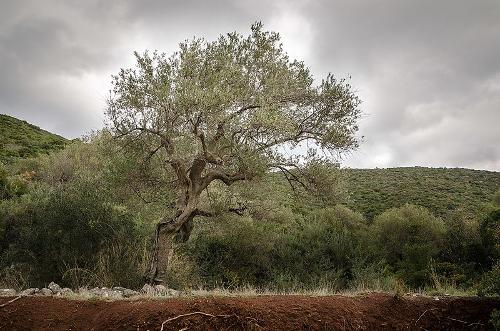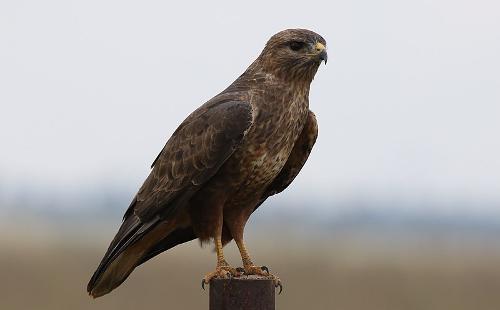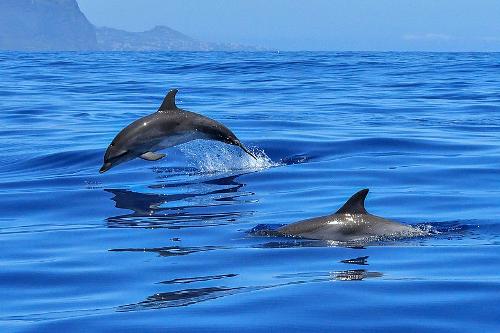PELOPONNESE
Plants and Animals

Plants and Animals
Popular destinations GREECE
| Aegina | Alonissos | Andros |
| Chios | Corfu | Crete |
| Hydra | Kalymnos | Karpathos |
| Kefalonia | Kos | Lefkas |
| Lesbos | Mykonos | Naxos |
| Paros | Patmos | Peloponnese |
| Poros | Rhodes | Samos |
| Santorini | Skiathos | Skopelos |
| Spetses | Thasos | Zakynthos |
Plants and Animals
Plants
The best time to see wild flowers and plants in the Peloponnese is in spring, but the flowering period actually starts in January and continues in waves, with April being the most exuberant month. But even in the dry, hot summer there are still botanical peculiarities to be found, and autumn is another period with a mini-revival of flowering flora.
 Iris PeloponnesePhoto: Peganum CC 2.0 no changes made
Iris PeloponnesePhoto: Peganum CC 2.0 no changes made
Orchids, 80 species and all protected, fall into three categories in Greece: orchids, including the snipe orchid and the rare Ophrys tenthredinifera; mirror orchids, including the monkey orchid and the mitten orchid; tongue orchids, including the broad-leaved tongue orchid and the common tongue orchid.
A special feature is the giant orchid, which can grow up to 80 cm high above the grass or shrubs and smells especially lovely in the sun.
 Olive Tree, PeloponnesePhoto: Belesis Apostolos CC 4.0 no changes made
Olive Tree, PeloponnesePhoto: Belesis Apostolos CC 4.0 no changes made
The olive tree has had an economic value since ancient times and can be found everywhere on the Peloponnese, together with the cypress tree, which can be found alone or in small bushes. Every village square is dominated by a (huge) plane tree, the exotic eucalyptus is often seen along the road, the tough tamarisk grows on the coast near the beaches. The Judas tree, with its striking pink butterfly flowers and leaves that change from brown to green to red with the seasons, can reach 8-10 metres in height.
Fruit trees are also plentiful, with large groves of lemon, orange and pomegranate trees, fig trees near Kalamata and the mulberry, once used for feeding silk worms. Of particular note is the carob tree.
Animals
The Peloponnese marshlands are an important habitat for migratory birds such as herons and flamingos seeking rest. The best place to see these and many other species is the Gialova or Divari lagoon in the Messinia region: the lagoon has 265 species of birds (79 of which are protected), 26 species of reptiles, 16 species of fish and 28 species of mammals. It is worth noting that the lagoon is the only place in Europe where the African chameleon, very sporadically, occurs.
 Buzzard, PeloponnesePhoto: Derek Keats CC 2.0 no changes made
Buzzard, PeloponnesePhoto: Derek Keats CC 2.0 no changes made
There are many birds of prey in the mountains, often buzzards, but also various types of eagles. Hare and wild boar are hunted in the mountainous areas and foxes, badgers and stone martens can be found in the lower-lying areas. In ruins and in attics there are many small owl species.
Lizards can be found all over the Peloponnese in varying degrees, small brown ones and large (approx. 50 cm) green ones. Turtles and snakes can also be found everywhere, although of the latter there is only one poisonous species, a species of horned snake.
 Dolphins, PeloponnesePhoto: Public domain
Dolphins, PeloponnesePhoto: Public domain
In the waters of the Peloponnese, dolphins are not uncommon guests; the loggerhead turtle, on the other hand, is becoming increasingly rare but still breeds on the protected beaches of the Western Peloponnese, especially near the villages of Kakovatos and Neochori.
On Mount Helmos near Diakofto is a butterfly garden where the rare Chalmos blue or Agrodiaetus iphigenia can be found.
Sources
Wikipedia
CIA - World Factbook
BBC - Country Profiles
Last updated November 2025Copyright: Team The World of Info